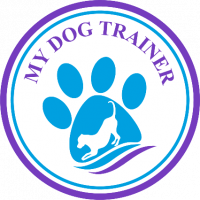Every dog needs grooming whether he is shorthaired or longhaired. Dogs should be groomed at least once a week, more often for the long coated types. It is not necessary to bath a dog too often, maybe a few times a year, but this obviously depends on the dog and how ‘doggy’ he smells or whether he has skin/coat problems.
An added benefit to regularly grooming your dog is that his coat will be smooth and shiny and looking it’s best, as well as having less hair floating around your house. The time spent grooming your dog depends on the length and thickness of his coat, as well as whether his fur is matted or not.
1. Use a brush to gently brush the outer coat.
If the hair is matted, use a matbreaker to gently comb out the mats.
2. Use a slicker brush to thoroughly brush your dog. It is important to comb and brush before shampooing your dog, since water tends to tighten tangles.
3. Use this opportunity to clean your dog’s ears, which you should check weekly, especially for the long-eared breeds, the ears should be clean, pink, free of dirt and wax build-up and should also odour-free. You can use a damp cloth dipped in mineral oil or an ear cleaner for dogs, to gently wipe out the visible portion inside the ear. Place cotton balls or gauze inside the ears to protect them from water.
4. The eyes should also be clear and free of discharge. Just gently wipe away any discharge or matter with a tissue. Take your dog to see the vet if he has profuse eye discharge or a yellowish coloured discharge
or if the under-eye area is matted. Use an ophthalmic ointment to protect your dog’s eyes from shampoo.
5. You are now ready to bathe your dog. Get all of your bathing equipment ready and have within your reach. Use tepid water, not hot, since your dog’s skin is thinner than ours and more sensitive; don’t use
cold water, since this may make bathing unpleasant from the start and may cause future hassle when bathing. Thoroughly wet your dog, which may take some time since your dog’s fur has a natural water
resistance.
6. Apply the correct type of dog shampoo to your dog’s entire body. Lather well with your hands or a special shampoo brush. It is important to spend time lathering up your dog’s underbelly, under the and legs. Make sure you get the shampoo deep into your pet’s coat.
7. Rinse thoroughly! Inadequate rinsing can be the cause of itching, dandruff and a dull coat. If your dog needs it, apply a dog conditioner and rise.
8. Now comb out your dog’s coat again and dry slowly and gently with a towel.
9. After bathing is a good time to trim your dogs nails since the water tends to soften the nails. The nails should also be clipped regularly to keep them short and trim. Be careful of trimming off too much, since you can cut the quick and make it bleed. It’s best to trim off only a little bit at a time, where the nail just starts to curve downwards. With dogs that have pale nails, it is easy to see where the quick is – it is pink, so cut below the pink – the white part.
Dental hygiene is almost unheard of here in Barbados, but poor practice can cause many problems than just bad breath. Diseases of teeth and gums are probably as common in pets as they are in people, and cause the dogs as much pain and discomfort, which can lead to them biting. Use a damp cloth and gently rub the dog’s teeth and gums. Do NOT use human toothpaste, since dogs cannot spit and may swallow the toothpaste; the ingredients used in human toothpaste can be bad for dogs.
If you want to have an easy time of grooming – brushing, bathing, clipping nails, cleaning eyes, ears and teeth, you must accustom your puppy to the routine early.
To start, get a treat that will take a while for the pup to eat, like a hard dog biscuit, hold the treat in one hand while the puppy is nibbling on it and with the other hand you can stroke, brush, check ears, paws and nails with the other hand. Initially, you really won’t get much done, the idea is to accustom the puppy to handling, which is a good experience for him, and while he is busy with the treat, he won’t think about pulling away or objecting. Continue to do this for a while until your puppy is used to handling. Gently open his paws to look for fleas &/ ticks, squeeze his nails, lift up his ears, etc. Initially just pretend to do stuff, then rub his body and parts all over with the grooming equipment, and then when the puppy is calm and accepts the attention, then start the real job.
Calmly, quietly and firmly go about your grooming, giving lots of praise and treats. You’ll be glad you took the time to get him used to grooming, since it will save you time in the long run and it will be a pleasant experience for both of you.
Consult with a qualified Dog Groomer who has been trained to deal with many types of dogs’ hair, coats, trims and condition, on what’s best for your dog.

